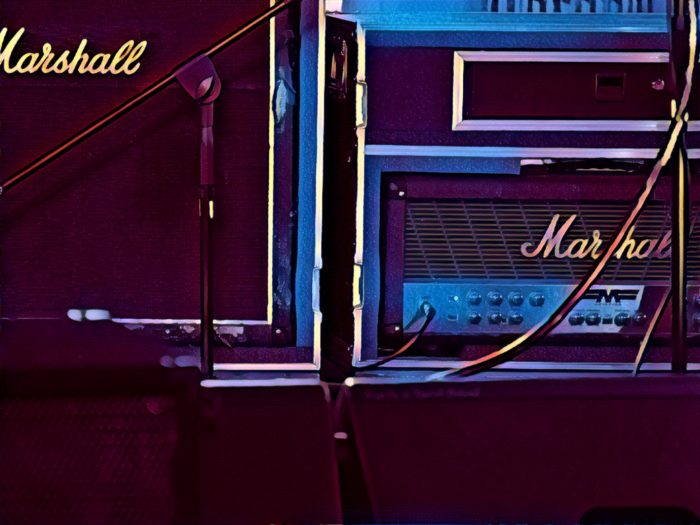Don’t forget that “accidental” dynamics processing is a big part of guitar tone.
Please Remember:
The opinions expressed are mine only. These opinions do not necessarily reflect anybody else’s opinions. I do not own, operate, manage, or represent any band, venue, or company that I talk about, unless explicitly noted.

 Want to use this image for something else? Great! Click it for the link to a high-res or resolution-independent version.
Want to use this image for something else? Great! Click it for the link to a high-res or resolution-independent version.Not so long ago, I was watching a YouTube video of Eddie Van Halen playing a guitar solo. I was struck by something as I took in the performance: Eddie’s guitar tone wasn’t very heavily distorted, but it was MASSIVE. The instrument sounded about fifty feet tall, with a tremendous amount of perceived power behind even the highest notes.
I realized in those moments that I’ve tended to forget a very important component of the quest for “ultimate guitar-tone bliss.” That component is dynamics; To be more specific, compression, and what it does to the sound of a guitar.
We certainly can’t ignore purely tonal components. Harmonic distortion – however it’s precipitated – is key to the signature sounds of rock and roll six-strings. At the same time, distortion doesn’t occur in a vacuum (though it may occur in vacuum tubes…sorry, I had to). When an audio circuit, or something pretending to be an audio circuit distorts, there is a necessary dynamic element involved. Some device is unable to produce output voltage that fully tracks the input voltage. Insufficient voltage can be swung at an output, and the device clips at its maximum. The audio doodad in question becomes a brickwall limiter with hyperfast attack and release, where the threshold is the maximum voltage the device can deliver.
When that comes into play, there are a good number of non-distortion related elements that become critical. Sounds that would be lost against an aggressive pick attack are smashed into clear audibility. Indeed, the guitar “gets more sustain,” because what would normally drop into the environmental noise floor is now running much hotter, where it’s easy to hear. Notes that would jump ahead of others in a chord are now rather closer to their counterparts, affecting our perception of how that chord is voiced…even if only in subtle ways.
My point in all this is to remind myself, and others, that tone is more than just the magnitude response of the amp and cabinet. It’s more than the proportion of generated harmonics to the original signal. The natural compression, or lack thereof, inside the totality of a guitar circuit has profound consequences.
And, as a parting idea, I wonder what would happen if a guitarist intentionally experimented with more consciously separating the compression aspect from the distortion. That is, if they started by playing around with compression and limiting that operated very cleanly, and then gradually added harmonic distortion components on top of it all – post the dynamics. If anybody does some experiments in that area, please do record it and put it on social media. I’d be interested to hear what you come up with, in any case.